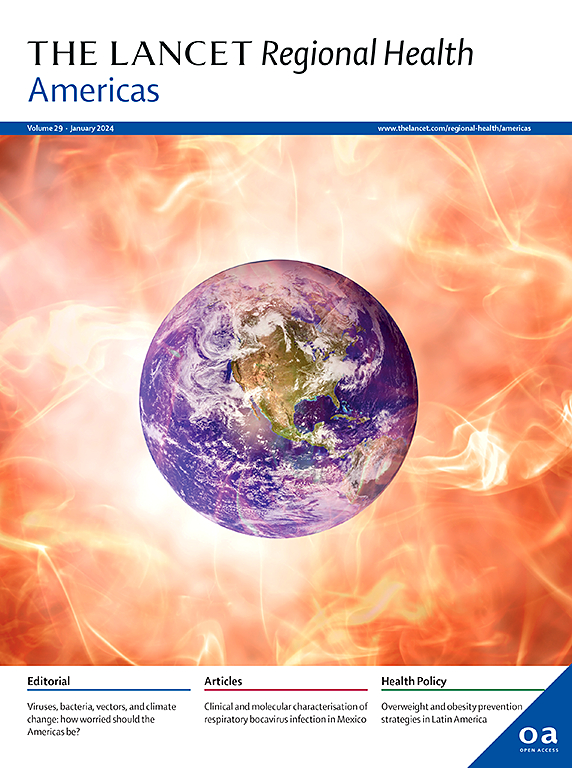Cyberbullying, mental health, and substance use experimentation among early adolescents: a prospective cohort study
IF 7
Q1 HEALTH CARE SCIENCES & SERVICES
引用次数: 0
Abstract
Background
Although cyberbullying has been linked with adverse health outcomes, most prior studies have been cross-sectional, and there are limited large-scale, prospective analyses examining cyberbullying and mental health and substance use outcomes in early adolescents. Therefore, the aim of this study was to determine prospective associations between cyberbullying, mental health, and substance use experimentation one year later in a US national cohort of early adolescents (11–12 years old).
Methods
We analyzed prospective cohort data from the Adolescent Brain Cognitive Development (ABCD) Study (Year 2, N = 9799). Linear and logistic regression analyses were used to determine associations between cyberbullying victimization (exposure variable, Year 2) and mental health (depressive, anxiety, attention, somatic, oppositional defiant, conduct problems, and suicidal behaviours), and substance (alcohol, nicotine, cannabis) use experimentation outcomes (Year 3), adjusting for sociodemographic variables and mental health outcomes, suicidal behaviours, or reported substance use experimentation at Year 2.
Findings
The total analysed sample comprised 9799 who were 48.4% female and racially/ethnically diverse (45.1% non-White). 8.7% reported lifetime cyberbullying victimization. Cyberbullying victimization was prospectively associated with higher depressive (β = 0.61, 95% CI 0.02–1.19), somatic (β = 1.00, 95% CI 0.42–1.57), and attention problems (β = 0.52, 95% CI 0.03–1.00), as well as suicidal behaviors (adjusted odds ratio [AOR] 2.62, 95% CI 1.73–3.98) one year later. Cyberbullying victimization was prospectively associated with higher odds of alcohol (AOR 1.98, 95% CI 1.53–2.57), nicotine (AOR 3.37, 95% 2.16–5.26), and cannabis (AOR 4.65, 95% 2.46–8.77) experimentation one year later. While cyberbullying victimization was associated with anxiety, oppositional defiant, and conduct problems in the unadjusted model, this was no longer significant after adjusting for covariates.
Interpretation
Given associations with poor mental health and substance use in early adolescents, it is important to develop interventions to prevent and reduce cyberbullying. Pediatricians, parents, and educators can provide mental health support for early adolescent victims of cyberbullying.
Funding
This research was supported by the Bill and Melinda Gates Foundation (INV-048897). J.M.N. was funded by the National Institutes of Health (K08HL159350 and R01MH135492) and the Doris Duke Charitable Foundation (2022056).
青少年早期网络欺凌、心理健康和物质使用实验:一项前瞻性队列研究
虽然网络欺凌与不良健康结果有关,但大多数先前的研究都是横断面的,并且对早期青少年网络欺凌与心理健康和物质使用结果的大规模前瞻性分析有限。因此,本研究的目的是确定网络欺凌、心理健康和一年后美国国家早期青少年队列(11-12岁)药物使用实验之间的前瞻性关联。方法我们分析了来自青少年大脑认知发展(ABCD)研究(第二年,N = 9799)的前瞻性队列数据。使用线性和逻辑回归分析来确定网络欺凌受害(暴露变量,二年级)与心理健康(抑郁,焦虑,注意力,躯体,对立违抗,行为问题和自杀行为)和物质(酒精,尼古丁,大麻)使用实验结果(三年级)之间的关系,调整社会人口统计学变量和精神健康结果,自杀行为,或二年级报告的物质使用实验。调查结果分析的总样本包括9799人,其中48.4%为女性,种族/民族多样化(45.1%为非白人)。8.7%的人表示一生都遭受过网络欺凌。网络欺凌受害与一年后较高的抑郁(β = 0.61, 95% CI 0.02-1.19)、躯体(β = 1.00, 95% CI 0.42-1.57)、注意力问题(β = 0.52, 95% CI 0.03-1.00)以及自杀行为(调整优势比[AOR] 2.62, 95% CI 1.73-3.98)具有前瞻性关联。网络欺凌受害者与一年后酒精(AOR 1.98, 95% CI 1.53-2.57)、尼古丁(AOR 3.37, 95% 2.16-5.26)和大麻(AOR 4.65, 95% 2.46-8.77)实验的较高几率有前瞻性关联。虽然在未调整的模型中,网络欺凌受害与焦虑、对立违抗和行为问题有关,但在调整协变量后,这一点不再显著。鉴于网络欺凌与青少年早期精神健康状况不佳和物质使用有关,制定干预措施以预防和减少网络欺凌是很重要的。儿科医生、家长和教育工作者可以为网络欺凌的早期青少年受害者提供心理健康支持。本研究得到了比尔和梅林达·盖茨基金会(INV-048897)的支持。J.M.N.由美国国立卫生研究院(K08HL159350和R01MH135492)和Doris Duke慈善基金会(2022056)资助。
本文章由计算机程序翻译,如有差异,请以英文原文为准。
求助全文
约1分钟内获得全文
求助全文
来源期刊

Lancet Regional Health-Americas
Multiple-
CiteScore
8.00
自引率
0.00%
发文量
0
期刊介绍:
The Lancet Regional Health – Americas, an open-access journal, contributes to The Lancet's global initiative by focusing on health-care quality and access in the Americas. It aims to advance clinical practice and health policy in the region, promoting better health outcomes. The journal publishes high-quality original research advocating change or shedding light on clinical practice and health policy. It welcomes submissions on various regional health topics, including infectious diseases, non-communicable diseases, child and adolescent health, maternal and reproductive health, emergency care, health policy, and health equity.
 求助内容:
求助内容: 应助结果提醒方式:
应助结果提醒方式:


